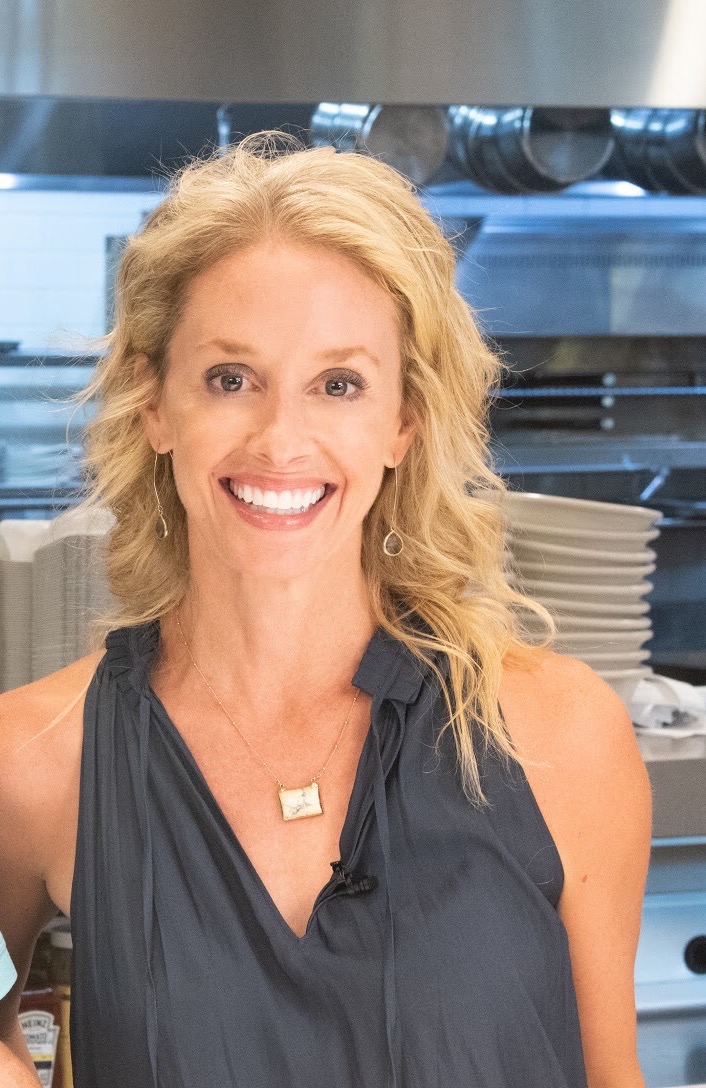A friend recently compared the pace of my life to intersession. If you’re not familiar, intersession is when an entire course is crammed into the short break between semesters. When I was in college, intersession was my go-to solution to maximize productivity instead of taking a break, knocking out a full semester’s worth of coursework in just three short, intense, over-stimulated weeks.
Relaxing, enjoyable, peaceful? No way.
Efficient? Absolutely.
In the 20-plus years since college, this pattern continued. Everything on high speed. Always looking to optimize just how much can I fit in into the smallest window of time. And no surprise, it often backfires.
There are some upsides to it: I absolutely love – and incorporate daily – the concept of a walk-and-talk, for example. It’s the best of both worlds, double-dipping into multiple baskets of productivity and joy. I get to spend time with friends, family, my husband, and we each get to reap the endorphin and mental clarity benefits that comes with movement.
I thought that I was relatively peaceful, balanced, centered, but the reality is that I had been running on all cylinders for decades.
Multitasking has its place, but no one should have to live a life of intersession.
So when my husband and I recently had the opportunity for extended travel, I made the commitment to myself that I would use this time away to strive for true balance. And, even more critical, to develop habits, behaviors and a mindset that I could maintain once back into ‘real’ life.
And it’s been life changing.
By no means do I have it mastered. Not even close.
The art of slowing down is something I’m continuing to learn and work on. And I continue to improve and make strides every single day.
Here’s a peek at what I observed, learned, and experienced along the way, and what truly inspired me. I hope it inspires you as well, so we can each settle back a bit, feel more peaceful, breathe more deeply, and have more time – and more emotional availability – to soak in the energy and positivity that surrounds us.
No plan is the best plan. Our best experiences unfolded when we were unplanned, unscheduled, allowing ourselves to be fully open to truly experience the experience.
When in Rome (or Parma or Praiano…). We stayed in over 20 different towns – most of them small towns – during our three months of travel through Europe. And yet in spite of living somewhat of a vagabond life with multiple trains, planes, cars and ferries, our lives felt slower than ever.
The European culture is just so different from our go-go-go lifestyles in the US. And we often hear this, but it was very different to actually live this, for months. One of the most striking differences is that Europeans take pretty much everything at a slower pace (except driving, of course!).
How they drink their coffee. The cafes were the first big ah-ha moment: In most places, there are no to-go cups. Europeans slow down, and even stop, to enjoy their coffee. Even in the hustle-bustle of train stations and city centers, no one has a paper or plastic coffee cup in hand. Instead, they sit at the table or stand at the counter to sip their coffee. They visit with others around them. They read (a real book, not just a smartphone). They people watch. The point is, they carve out this space in their day to slow down, savor their coffee, and soak in the world around them.
Restaurants. Meals can easily take three hours, if that’s what you’re looking for. And the restaurants not only accept this, they encourage it. Unlike in the US, where efficiency reigns and the bill arrives the moment the last plate is cleared, the check isn’t rushed in Europe. In fact, the customer generally must request the check before the server will bring it to the table. And everyone is okay with this, because the entire point is to savor the meal and spend time with family and friends, not to rush on to the next task on our to-do list.
Smartphones. We didn’t see the prevalence of phone-glued-to-hand that we have in the US. I don’t think I saw a single Italian texting while walking or driving. And for the most part, smartphones are put away at mealtime.
We also used these months to distance ourselves from our own smartphones. We purposely didn’t do an international data plan; we only had access to emails and texts when we were connected to WiFi, which made our screen time much more purposeful, only engaging with our phones when we had a specific need to do so.
Slow food. Scratch cooking. We shopped at the local markets practically daily for the freshest ingredients. And foods are prepared from scratch, not mass-produced. Specialty ingredients like Parmigiana Reggiano, traditional Balsamic vinegar, Parma ham – all of these are aged for years, quite literally. The same processes are used today that have been used for centuries – there’s no rushing the process with a short-cut, no fast-tracking with technology.
On a side note, when our nutrition team consults for international restaurant chains and we have an up-close look at recipes and production styles, it’s always striking to me that the menu may look the same in restaurants in the United States and in Europe. The names of the dishes are the same, the layout looks the same – but the food really is anything but similar. In the US, ingredients are mass-produced: Bottled salad dressings and sauces, frozen poultry, pre-packaged croutons and crisps. We use nutrition information from the label on the packaging determine the nutritional content of meals. In Europe, however, these same ingredients are house-made from scratch, not purchased pre-packaged. And so we use the actual recipes – not product labels – to determine the nutrition facts for these ingredients.
Simpler appliances. An oven and a stovetop are really all we needed. No microwave, and no plug-in coffee pot, Keurig or Nespresso. Instead, we made coffee on the stovetop using a moka (the Bialetti brand is the favorite of most of the Italians we talked with; we ordered one immediately when we returned home to the US). Even laundry dryers are practically non-existent in much of Europe. Again, not in a hurry, not in a rush. Clothes are washed in the washing machine then hung out to line dry. (We didn’t continue this one at home, though we did fully embrace it throughout our travels).
Long line, no problem. One of the most mind-blowing things we noticed in Europe is the level of patience that most people have, especially when it comes to waiting. Waiting in line, waiting for a store to open (because many places, including pharmacies and doctor’s offices, close for several hours mid-day). There’s very little sense of urgency. Very few exasperated sighs, pointed glances at watches, or eye rolls. The process of waiting simply does not seem to bother people – it’s truly stunning, especially when we’re so accustomed to the time-crunched, over-booked, over-extended American lifestyle.
Now that we’ve been back in the US for a while, back into the swing of our jobs and ‘real’ life, we remind ourselves daily to slow things down. And it’s not just slower. It’s also more purposeful, more thoughtful. Settling in a bit, appreciating the experiences, the people, the energy around us. And we’re doing our best to channel our inner Italians, keeping the focus on pleasure and joy versus sheer efficiency.
Molly Kimball, RD, CSSD is a registered dietitian + nutrition journalist in New Orleans. Tune in to her podcast, FUELED | Wellness + Nutrition and follow her on Facebook, Instagram and Twitter at @MollyKimballRD. See more of Molly’s columns + TV segments at www.mollykimball.com.


